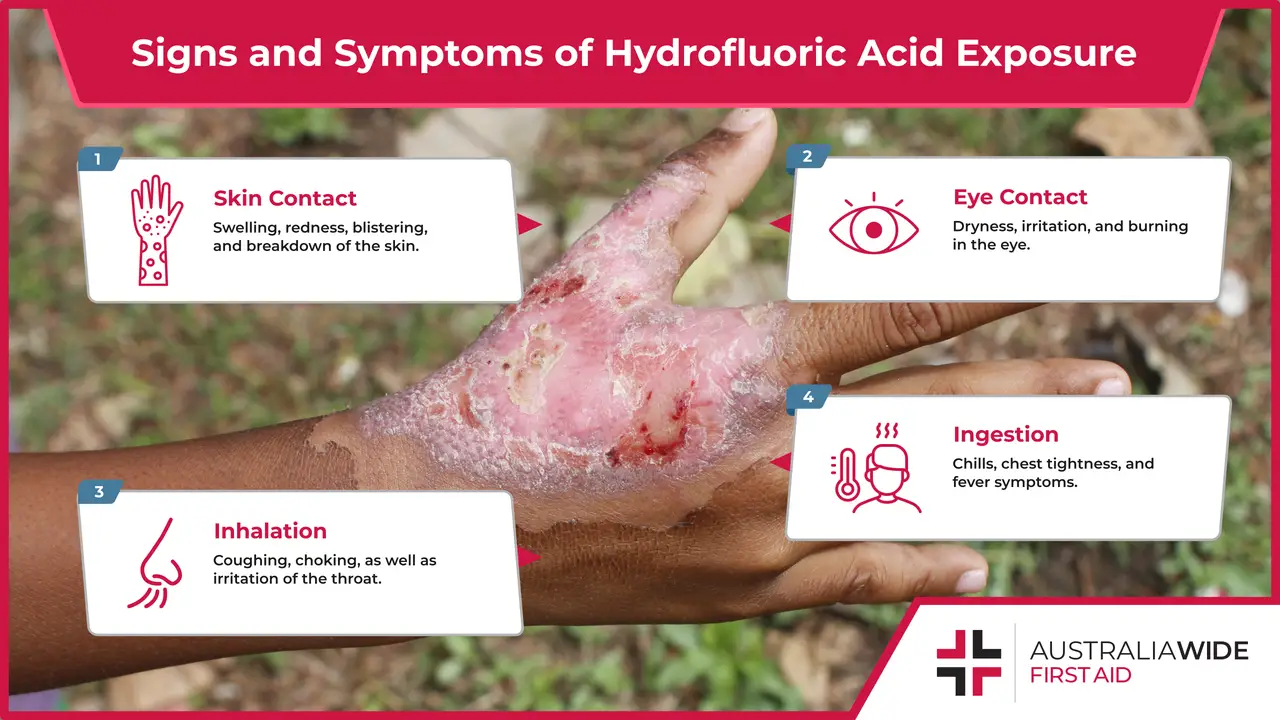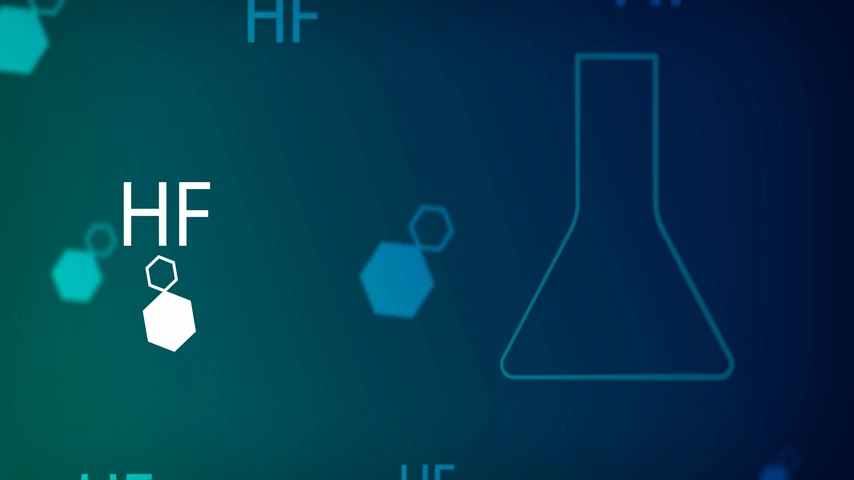First Aid Treatment for Hydrofluoric Acid Burns


Hydrofluoric acid is a chemical used in many Australian workplaces that causes chemical burns and other serious injuries.
Hydrofluoric acid is used for many industrial purposes, such as:
Depending on the concentration level, exposure to this toxic chemical through skin contact, eye contact, inhalation or ingestion can result in serious damage or death.
Though you should always use protective equipment and safety measures when handling chemicals in the workplace, accidents can happen. And when they do, you should always call 000. However, advanced medical treatment will not arrive straight away.
It is your main job as the first aid responder to keep the affected person stable in the meantime. The first aid response to these situations plays a critical role in minimising long-term damage to the person exposed to the acid. It is important for all employees to know first aid, as you may need to be the one administering first aid, even if does not form part of your specific role.
When it comes to hydrofluoric acid, severe injuries can be caused by skin contact, eye contact, ingestion, or inhalation. Burns resulting from hydrofluoric acid of even the lowest concentration can cause severe damage to the skin and body.
If you are working in an environment where hydrofluoric acid is used or stored, there are some signs and symptoms of exposure to be aware of. These symptoms can show up immediately, or sometimes hours later. It usually depends on the concentration level and type of exposure, such as skin contact or inhalation.
Suppose someone has been exposed to hydrofluoric acid through skin contact. You might see signs of painful burns, swelling, redness, or blistering on the skin. These reactions can be very painful and tend to show up almost immediately. Whereas if someone has been exposed to hydrofluoric acid through eye contact, inhalation or ingestion, you might see symptoms such as:
Hydrofluoric acid is highly corrosive compared to many other acids and can severely burn the skin, eyes and internal organs. There is also the potential for death, particularly through ingestion.
If you are administering first aid to someone who has had skin contact with hydrofluoric acid, there are a few things you need to do while waiting for emergency services to arrive. This immediate first aid response treatment includes:
While doing any of these treatment steps, you must wear proper gloves and other protective equipment to avoid burns to your own body.
Ideally, you should be first aid trained in treating acid burns and other chemical injuries. If you are not already trained in first aid, or it has been a long time since you attended a first aid course, you can acquire or refresh your certification through a variety of first aid courses.
This information is only intended as a general guideline. It should not replace proper first aid training and medical personnel instructions.

Acid burns on the skin are not the only symptom requiring first aid treatment. A person needs immediate attention if they have ingested or inhaled hydrofluoric acid or its fumes, or the chemical has entered their eyes.
First of all, if hydrofluoric acid or its fumes gets into a person's eyes, the first step is to flush their eyes out with water or saline wash. You will need to do this for at least ten minutes, and make sure to hold their eyes open and remove any contact lenses. Flushing the person's eyes is more important than transferring them for medical care. As such, only call 000 once you have the person over water.
Secondly, if someone has inhaled these toxic fumes, you must remove the person from the exposed air as soon as possible and check for signs of breathing. Again, protect yourself from the fumes and call 000. To refresh your memory, you can read over the DRSABCD action plan for first aid situations. Lastly, you may find yourself in a situation where someone has ingested hydrofluoric acid. Although it might seem counterintuitive, you DO NOT want to induce vomiting in the affected person. Follow the DRSABCD steps, and immediately call 000.
When it comes to hydrofluoric acid burns, it is better to prevent them from happening, rather than trying to manage their symptoms.
However, accidents happen despite our best intentions, so it is vital to receive training in first aid procedures.
Learn first aid today to keep yourself and others safe from acid burns and other chemical injuries in the workplace. Fast and effective first aid treatment can keep the person in a stable condition until help arrives, and it can prevent them from acquiring serious long-term injuries.
You can also download a free chart, which can be printed in A2 size or smaller.

March 6, 2025
Falls are one of the most common causes of injury, particularly among children and older adults. Whether it’s a simple trip or a serious fall from height, knowing how to administer first aid can prevent further injury and, in some cases, save a life.

October 1, 2024
The musculoskeletal system is the foundation of human movement, support, and protection, playing a critical role in our ability to perform everyday tasks. Understanding the components and functions of the musculoskeletal system is essential for preventing injuries and managing conditions that may arise, particularly in workplaces where manual handling tasks are common.

August 28, 2024
A jaw fracture is a break or crack in the jawbone. This type of injury can occur due to various reasons and may result in considerable pain and difficulty in performing everyday activities like eating and speaking.